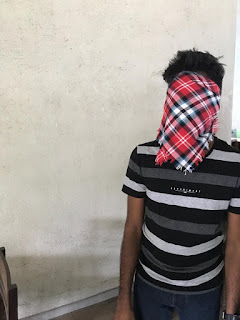Purpose:
This mission is designed to help you know how you feel when you trust someone else.

During the activity
We were able to analyze the role of the individual as publisher and receiver in the communication process.
Analysis of the influence of perception on effective interpersonal communication.
Demonstration and evaluation of the use and effect of verbal and non-verbal symbols in interpersonal communication.
Distinguish the various communication factors that improve or limit the effectiveness of communication in relational systems.
Use the appropriate listening styles and evaluate the importance of effectively listening to the contrast factors that contribute to the supportive and advocacy communication environment (eg, honesty, empathy, delivery) and involve support
Communication assesses the role of ethical standards in interpersonal communication and the implications of various relationship challenges
Stairs, where we stopped the curtain with the steps and where we stopped. There were white spots on the street, and if someone put a leg on them, they could fall. That's why they asked us to listen to the teacher. In the first round we had to follow the path and hit a rock. In the second round we had to hit two stones and concrete. In the first round, almost all the students wrote the piece with the correct instructions. But in the second round, some students forgot what to do. Some forgot to hit the stone after finding concrete blocks.
Procedure was,
1.This exercise is done in pairs.
Select a friend from the batch to be your partner
for this exercise. It should not be someone you know very well.
One person will act as a guide for
his/her partner, who is blindfolded and cannot see.
2.
The guide’s task is to lead the “blind”
follower around the environment, and stimulate as many of his/her senses as
possible except sight (e.g. pressure, touch, heat, cold, wind, sun, running,
walking, etc.). This exercise can be done indoors or outdoors, preferably both.
3.After about 15 minutes, change roles so
that the guide is now blindfolded and repeat (not exactly) the exercise.
- During the time you are being a guide, think about what you are doing or saying to communicate to your “blind” follower that you can be trusted, and when you could tell your partner trusted you.
- During the time
you are the “blind” follower, think about what your guide is doing or
saying to develop trust with you (or, what the guide is doing or saying
said that is making you feel less trusting of him/her




You got my best photo😉
ReplyDeleteNice sakuna
ReplyDeleteAwesome activity
ReplyDeleteSure we had great time...
ReplyDeleteNice 1 bruh 👌
ReplyDeleteIf you don't trust the pilot, don't go! Nice article.
ReplyDeletegood one dude
ReplyDeleteGood work!!!
ReplyDeleteFunny game
ReplyDeleteGood
ReplyDeleteMissed the fun...
ReplyDeleteWow nice one
ReplyDeletegood work
ReplyDeletenice work bro...keep it up...
ReplyDeleteThis comment has been removed by the author.
ReplyDelete